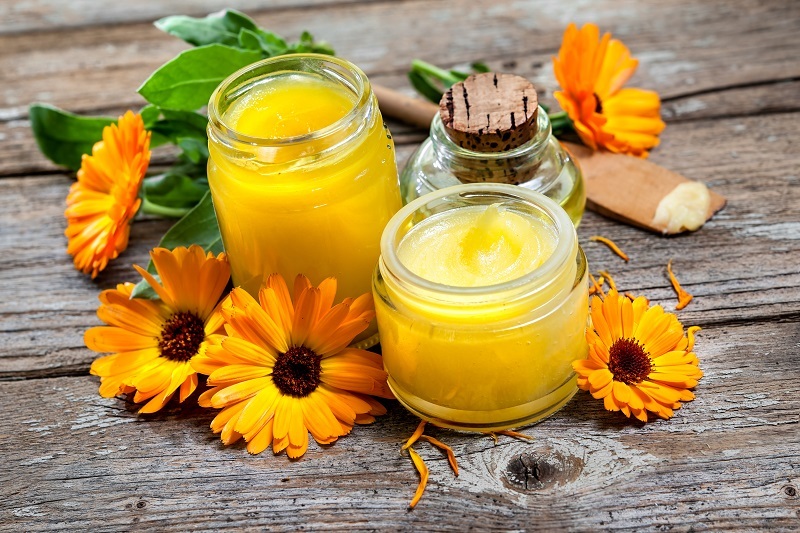Eye-Opening Insights: 8 Facts About Sunflowers to Discover
Posted on 06/09/2025
Eye-Opening Insights: 8 Facts About Sunflowers to Discover
When you see the towering stalks of sunflowers (Helianthus annuus), their luminous yellow petals, and sun-chasing faces, you might think you know everything about these iconic blooms. However, behind their brilliant beauty lies a world of fascinating science, culture, and history. In this article, we'll reveal eight captivating sunflower facts that will change the way you view these radiant wonders of nature. Whether you're a gardener, a flower enthusiast, or searching for fun trivia, these sunflower insights are sure to brighten your day.
1. Sunflowers Track the Sun--A Phenomenon Called Heliotropism
Perhaps the most famous trait of sunflowers is their tendency to turn their faces toward the sun throughout the day. This behavior, known as heliotropism, is most notable in younger plants. The term comes from the Greek words for "sun" (helios) and "turn" (tropos).
- Sunflowers follow the sun from east to west during the day, maximizing photosynthesis and growth.
- At night, they slowly return to face east, ready to greet the sunrise.
- As they mature, sunflower heads generally settle facing east and stop tracking the sun actively.
This natural movement is not only mesmerizing to observe, but also demonstrates how finely tuned sunflowers are to their environment.

2. Sunflowers Can Grow to Astounding Heights
Known for their impressive size, sunflowers are among the tallest flowering plants in the world. In fact, some species and cultivars boast world-record heights.
- The tallest sunflower on record stood at an incredible 30 feet 1 inch (9.17 meters), grown in Germany by Hans-Peter Schiffer in 2014.
- Most common garden varieties range from 5 to 12 feet, but dwarf sunflowers remain under 3 feet tall.
How do they reach such heights? Sunflower stems are specially adapted--thick, fibrous, and filled with strong vascular tissue that supports their enormous flower heads (which are sometimes heavier than a brick!).
3. The "Flower" Is Actually a Composite of Hundreds--Sometimes Thousands--of Tiny Florets
At first glance, a sunflower looks like one giant blossom. But peek closer, and you'll find each sunflower head is actually a collection of many small flowers, called florets.
- The central disk contains 1,000-2,000 individual tubular flowers, each capable of producing its own seed.
- The yellow "petals" are technically called ray florets, serving to attract pollinators.
- This floral arrangement is part of the sunflower's membership in the Asteraceae family, which includes daisies and asters.
This composite nature not only aids in successful pollination but explains why a single sunflower can produce so many seeds.
4. Sunflower Seeds Are a Superfood--Packed with Hidden Health Benefits
If you love to snack on sunflower seeds, you're doing your body a favor! Sunflower seeds are a nutritional powerhouse, offering a wide range of health benefits.
- High in vitamin E: An antioxidant that protects your cells from damage and supports skin health.
- Rich in protein: Ideal for vegetarian and vegan diets.
- Contain fiber, healthy fats, magnesium, selenium, and iron.
- Phytosterols in sunflower seeds help reduce cholesterol levels.
Moderate consumption can boost heart health, improve digestion, and support your immune system.
5. Sunflowers Have Been Cultivated and Revered for Centuries
The story of the sunflower is deeply entwined with human culture:
- Domesticated by Native Americans over 4,500 years ago--originally for food, oil, medicine, and dye.
- Transported to Europe by Spanish explorers in the 16th century, where they became icons of beauty and optimism.
- Referenced in Van Gogh's famous series of paintings, symbolizing joy and creative energy.
- In many cultures, sunflowers represent faith, loyalty, and adoration.
From ancient symbolism to modern gardens, sunflowers have always captured the human imagination.
6. Sunflowers Are Nature's Own Environmental Helpers
Did you know that sunflowers actively clean the environment? This remarkable trait is why they're used in phytoremediation--the process of using plants to remove toxins from soil and water.
- Sunflowers have been planted at sites of nuclear disasters like Chernobyl and Fukushima to absorb radioactive contaminants.
- They remove heavy metals such as lead, arsenic, and uranium from polluted soil.
- This makes sunflowers an eco-friendly and visually appealing ally in soil restoration projects.
Sunflowers offer hope for a cleaner, greener future--proving beauty and utility can bloom together.
7. Sunflowers Come in Many Colors and Varieties--Not Just Yellow!
When you think of a sunflower, bright yellow petals likely spring to mind. But sunflower varieties come in a stunning array of hues and forms.
- Sunflowers can be red, orange, white, burgundy, or even deep purple--pick varieties like 'Moulin Rouge', 'Italian White', and 'Autumn Beauty' for a colorful garden display.
- Dwarf, branching, and multi-flowered sunflowers add diversity to both garden beds and floral arrangements.
Whether you choose classic yellow or something more exotic, sunflowers offer endless options for creative gardeners and florists.
8. Sunflowers Are Pollinators' Paradise
Sunflowers aren't just beautiful--they play a crucial role in supporting pollinator populations like bees, birds, and butterflies:
- Their large, nectar-rich flower heads attract dozens of pollinators at once.
- After blooming, the seeds provide nutritious food for birds and squirrels.
- Planting sunflowers is an easy way to support biodiversity in your own backyard.
By growing sunflowers, you're helping to create a thriving, biodiverse ecosystem.
Sunflower Facts FAQ
What is the best location for growing sunflowers?
- Sunflowers need at least 6-8 hours of direct sunlight per day, so choose an open, sunny spot in your garden.
- They thrive in well-draining soil, with enough space to accommodate their roots.
How long do sunflowers take to bloom?
- Most annual sunflowers will bloom about 70 to 100 days after planting seeds--depending on the variety and local climate.
Can you eat all types of sunflower seeds?
- Yes, all true Helianthus annuus seeds are edible. However, some varieties are bred for oil or ornamental purposes and may not taste as good as those bred for snacking.
Do sunflowers need much care?
- They are relatively low-maintenance! Just ensure sufficient sunlight, water, and support for taller varieties.

Final Thoughts: The Enduring Appeal of Sunflowers
Sunflowers are more than just tall and cheerful flowers. From their remarkable heliotropism to their role as environmental helpers, sunflowers facts show how these plants touch nearly every aspect of our lives: health, art, the environment, and beyond. Planting, observing, or learning about sunflowers enriches our understanding of the natural world and offers daily inspiration.
Now that you've discovered these eight surprising and eye-opening facts about sunflowers, why not share your favorite with a friend, or even plant a few seeds this season? Let these golden beauties illuminate your garden and your mind!
Quick Recap: 8 Fascinating Sunflower Discoveries
- Sun track the sun with heliotropism
- Can reach record-breaking heights
- A flower full of hundreds of tiny florets
- Seeds are packed with health benefits
- An ancient and beloved symbol across the world
- Help clean and heal the environment
- More than just yellow--many varieties and colors
- A haven for pollinators and wildlife
Let the brilliance and versatility of sunflowers inspire you every day!
Latest Posts
Eye-Opening Insights: 8 Facts About Sunflowers to Discover
Bouquets of Bliss: The Psychological Perks of Petals
Expert Advice on Nurturing Orchids







